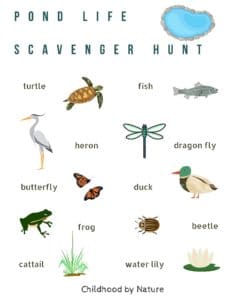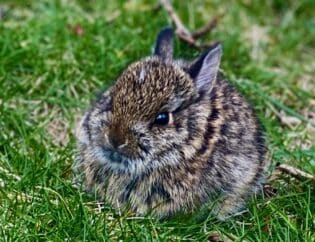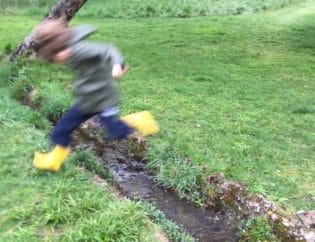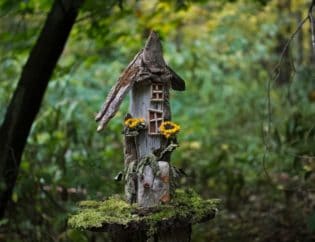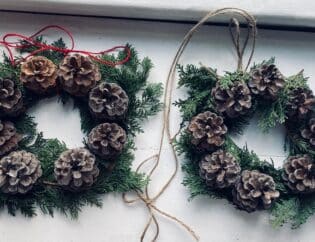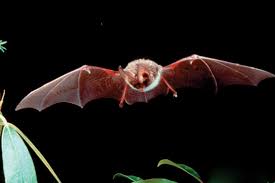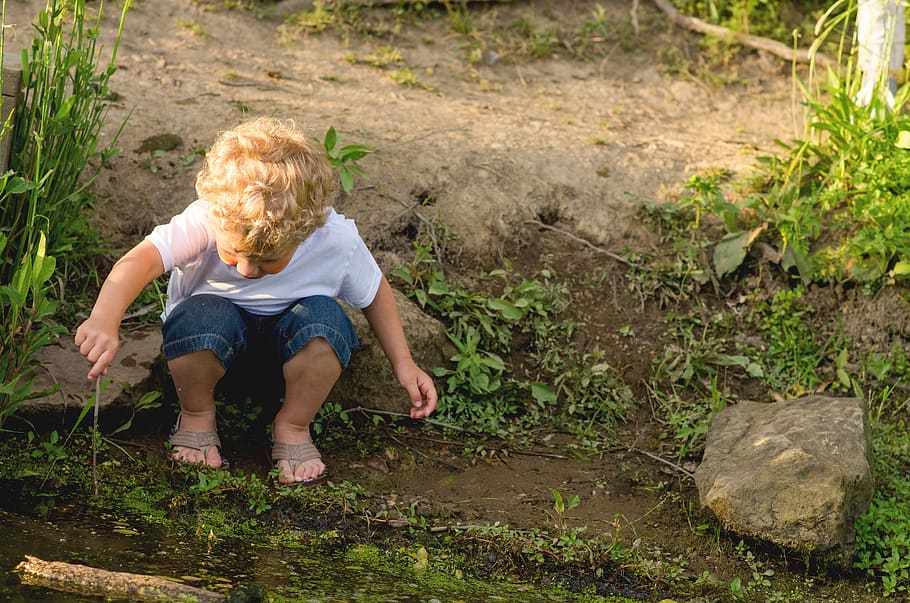
Ah, pond life. The simple life. But what looks like a quiet, still— even stagnant— place on the surface is actually a busy ecosystem brimming with life and so much nature to take in.
Ponds are sensory discovery zones. A child can wade in the waters of a pond, explore the mud between their fingers, listen to the calls of frogs, see dragonflies exhibit a multitude of behaviors and feel the sunshine on their face. Ponds are great for teaching children about wildlife and the different stages of the life-cycle of small creatures such as frogs as they unfold in natural surroundings. True reality entertainment.
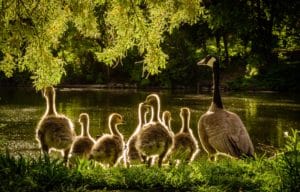
Let's start with what defines a pond. Ponds are quiet bodies of water so shallow that rooted plants grow completely across it. A pond's bottom is usually covered with mud and its water temperature is fairly uniform from top to bottom and there is very little wave action. Sounds like a good place to explore!
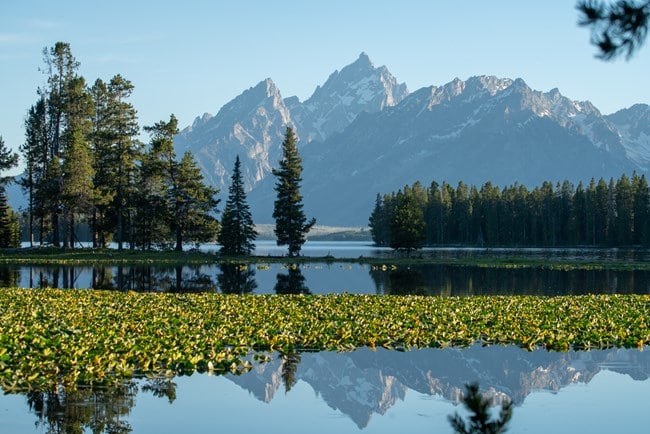
Just remember that not all ponds are created equal. Some ponds are created by streams— mountain-stream ponds. Others are created intentionally such as farm ponds There are also mountain ponds, formed by glaciers, cypress ponds and bog ponds. You can learn a ton about your local pond together with your child.
First, make sure you head out prepared. Bring a bucket for sampling, a water scope, a net for catching swimming or flying critters. Whether your child prefers to head in with their bare feet for a truly sensory experience or wear water shoes, warn them that ponds can be slippery places! Rocks, mud, algae, and grass combine to create quite the slippery formula. And a child can drown in just a few inches of water so be vigilant. Always keep an eye on your child when exploring ponds. Be sure to check the wading area for slippery or sharp rocks and drop-offs.
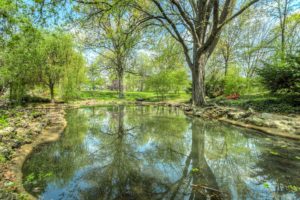
When you first get to the pond, walk around it and take it in together. Once you’ve done a walkaround, ask your child to find their own observation spot and have them spend a few minutes just watching. It can be anywhere they choose. Make sure they are within your eyesight. Don’t give them species to focus on or behaviors to look for. Just have them take in the big picture. Ask them to practice silent observation by keeping their movements small and their voices quiet.
After a few minutes of big picture observation, start zooming in on activity or critter that caught their eye. Ask your child to focus on one thing they noticed and tune into it. What is it? How is it using the pond? Who is it interacting with? What does it do in the pond? What does it eat or where does it shelter?
If your child likes to write or create art, this is a great time to have them capture some of their observations in their nature journal, draw a sketch of the critter or other pond features such as plant life or the ripples on the water’s surface.
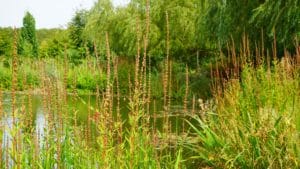
If you have an adventurous child, encourage them to engage more of their senses by experiencing the water, mud or get closer to the sounds of the pond. Ask them what they would like to touch: the fuzziness of a cattail, the gooeyness of mud, the sliminess of an algae-covered rock. Be sure to help them understand how to touch the parts of the pond they are interested in without disturbing the environment or hurting any creatures.
If your child really wants a full-on sensory experience, let them wade into the pond. This is a great way for them to experience how the water temperature, while fairly consistent, does range from bottom to top with the colder, denser water settling at the bottom while the warmer water is at the top. Ask them if they can feel this on their own?
Another fun experience is to feel the bottom of the pond on their feet. As most ponds have a muddy bottom, this should feel good. But there are likely to be plants, some rocks and even some critters like snails and sponges down there. If they are intrepid, have them reach in and pick up some mud from the bottom. Bear in mind that some ponds can have jagged rocks on their bottom and some might have leeches in them. Leeches are found in shallow protected waters and are most active on hot summer days and at night. This nuisance critters are drawn to disturbances in the water near docks and swim beaches. To avoid leeches, swim in deeper waters off docks and floats. Leeches are mostly found in organic sediments or debris, so try to avoid these areas if leeches are known to be in the pond.
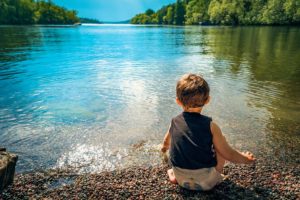
Pond water is a world onto itself! Have your child use their bucket to take a sample of the pond water and peer inside to see what they caught. It could be small fish, plants tadpoles, insects, or a whole lot of murky water. A butterfly or fishing net is also a great way to catch critters in the water or the air around a pond. Butterflies, dragonflies, and water insects love to refresh, eat, and drink on the water of a pond. Chasing these critters on the shore of the pond is a fun challenge for kids and one that not enough kids get to experience. Be sure they learn to be gentle when catching their critter, Once they take a gentle look, noticing the parts of the insect as well as its colors and patterns up close, help your child release the critter safely.
Older children may want to take a small sample of pond water home in a specimen jar like a baby food jar and explore the microorganisms closer under a microscope. They will likely be amazed at what they see under there!
Let your and your child's imagination run wild as you explore this fascinating ecosystem together. Here are some more ideas for having fun exploring nature at a pond!
Fun Things to do at the Pond
Find as many pond critters as you can with a Pond Scavenger Hunt. Our free downloadable printable is here to help!
Observe dragonflies. Dragonflies are also called Mosquito Hawks or Devil’s Darning Needles. If you think there is just one species of dragonfly, think again! There are around 400 species of dragonflies in North America alone.
Scout turtles. Turtles are pond lovers. They bask on rocks and logs to fill their body with warming energy. They scavenge dead animal and plant material and remove diseased or weakened fish, contributing to improved water quality and fish population health. In the spring, baby turtles (just tiny, mini versions of the big guys) are an absolute delight to find. Some aquatic turtles can absorb oxygen through the skin on their neck allowing them to remain submerged underwater for extended periods of time and enabling them to hibernate underwater. Look for turtle heads popping out the surface of the pond’s water. The soft-shelled turtle uses its long tip nose and nostrils like a snorkel to breathe underwater.
Look for and listen to frogs.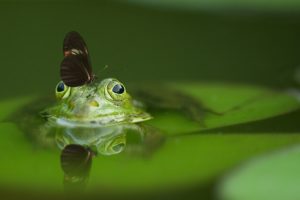
Learn about Water Lilies. Why do they float? What lies beneath the surface? How do animals use them? Learn more at home. Then, go Monet & create a masterpiece of your own.
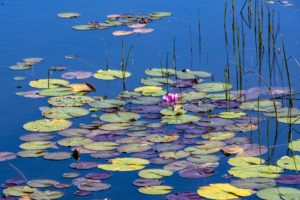
Go fishing.
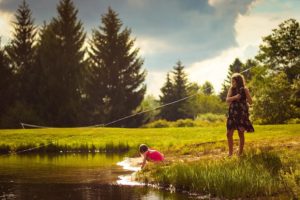
Bring along a water scope, or underwater viewer. Make one of these handy tools by sealing a piece of glass in a bottomless bucket or water-proofed box. You can buy one or make one using these instructions here.
Feed fish.
Make a crown or wand out of cattails.
Feed waterbirds. The age-old debate is whether it’s safe to give break to birds or not. In fact, bread in itself is not the best food to give waterfowl as it fills them up without giving them the nutrients they need. Bird experts recommend small amounts of grain such as wheat, corn or bird seed, plus fresh chopped greens like cabbage or spinach, as these will supplement the birds’ natural diet and help provide the birds with the necessary nutrients to keep them healthy.



